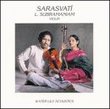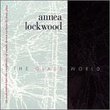| All Artists: Giuseppe de Luca, Charles Gounod, Daniel-Francois-Esprit Auber, Gioachino Rossini, Giacomo Meyerbeer, Vincenzo Bellini, Giuseppe Verdi, Ambroise Thomas, Gaetano Donizetti, Eva Dell'Acqua, Henry Rowley Bishop, Josef A. Pasternack, Rosario Bourdon, Amelita Galli-Curci, Tito Schipa Title: Galli-Curci: Prima Voce Members Wishing: 0 Total Copies: 0 Label: Nimbus Records Release Date: 12/2/1992 Genres: Pop, Classical Styles: Vocal Pop, Opera & Classical Vocal Number of Discs: 1 SwapaCD Credits: 1 UPC: 710357780622 |
Search - Giuseppe de Luca, Charles Gounod, Daniel-Francois-Esprit Auber :: Galli-Curci: Prima Voce
 | Giuseppe de Luca, Charles Gounod, Daniel-Francois-Esprit Auber Galli-Curci: Prima Voce Genres: Pop, Classical
|
Larger Image |
CD DetailsSimilar CDs
|
CD ReviewsA good Old Time recording Dewey | Houston,TX | 10/08/2003 (5 out of 5 stars) "I've borrowed this Cd from the library and I was greatly impressed by this coloratura. Her register is even. Songs are beautifully sung with impeccable taste. Her voice is clear and as beautiful as a bird (in a good way). Though these arias were record in the 1920's the hisses are minimal. I had no problem listening to it. I've listen to other coloraturas, J. Sutherland, B. Sills, Sumi Jo, N. Dessay, E. Gruberova, and yes even N. Melba, yet this is still one of my favorite CD for coloratura. Maybe it is her extremely flexibility, lightness, or freshness. Whatever the reason, I have enjoyed this CD and have just ordered it. It should an inclusion for any soprano recital collection" Before Pons there was Galli-Curci Steven A. Peterson | Hershey, PA (Born in Kewanee, IL) | 02/20/2007 (4 out of 5 stars) "Lily Pons was a reigning diva at the Metropolitan opera starting in the 1930s. She was deemed to be the natural successor to Amelita Galli-Curci. This CD does a nice job of representing the repertoire of Galli-Curci. While the recording quality is not great, it compares well with other records of the late 19 teens and 1920s. First, a brief reaction to some of the pieces on this CD. "Una voce poco fa" from Rossini's "Il Barbiere de Siviglia," demonstrates Galli-Curci's agile voice. The cabaletta shows Galli-Curci's coloratura technique, with good ornamentation. She shows an agile voice, too, in Meyerbeer's "Ombra leggiera." I would rate this as a good (if not great) version. She shows an adequate trill; the trajectory of this piece is such that the close is the most satisfying component of the cut. She floated a very nice high note at the end. Bellini's estimable I Puritani features a classic aria-cabaletta: "Qui la voce. . .Vien diletto." In the cabaletta, she shows nice technique at the start. Her approach is somewhat different from sopranos from the past several decades. The shows a nice trill at the conclusion and a very well done high note. Verdi's "La Traviata" features many attractive pieces for sopranos. One of the real showpieces is "Sempre libera." Galli-Curci provides some nice characterization. Her version is fast paced, she shows good vocal control, her runs are well done, and her florid technique is fine. Again, an adequate trill and good final high note. The cabaletta from the "Mad Scene" from Donizetti's "Lucia di Lammermoor," "Spargi d'amaro pianto," is more vanilla than most recent versions. The first run through is melodic and fine, with nice runs. The repeat features no trills, although the level of ornamentation is greater. A not very exciting version. Second, this is a welcome introduction to the specialties in Amelita Galli-Curci's repertoire. Given the technology of the time, one gets a good sense of her voice. She sings well, although I think that her coloratura technique is a little spare (perhaps a matter of taste and evolving views of the proper technique for the Bel canto repertoire). " Very good sound Joseph Hart | Visalia, CA United States | 11/23/2007 (4 out of 5 stars) "These tunes were recorded from 1917 to 1924. The reproduction is excellent. Obviously they weren't recorded yesterday, but the only betrayal (beside the thin sounding quality of her voice) is a hiss which is only noticeable (to me) when the piece ends. It's noticeable by its absence. She and some other sopranos of her era I ordered in the passed few days were the Jos and Sutherlands and Sillses and Dessays and Gheorghuis of the first half of the 20th century. Though her coloratura is better than Gheorghiu's, and after the farce she made of Lucia's mad scene on her 2 disc set, I don't know WHAT to think of Dessay. This is a wonderful album (age considered), they were singing the same arias in 1917 that they're singing in 2007, which was a disappointment, but what else is there unless you go into art songs, and I don't like art songs. I prefer opera arias. Only one quibble. She sings only a segment from Lucia's mad scene, it does not include the flute, and she just stops, no high note at the end. Phooey. Possibly more of the aria/scene was continued in segments on other 78 records at the time. Oh. Two quibbles. She only breaks and goes for one top note on the whole disc. I was disappointed, but I'm becoming numb to that. Few sopranos do it, or maybe it's too difficult so they don't. At least it proves she could do it if she wanted to. But that's small comfort, consolation, and intellectual. No wonder they called Sutherland La Stupenda, and Jo and Sills go for top notes too."
|

 Track Listings (18) - Disc #1
Track Listings (18) - Disc #1
